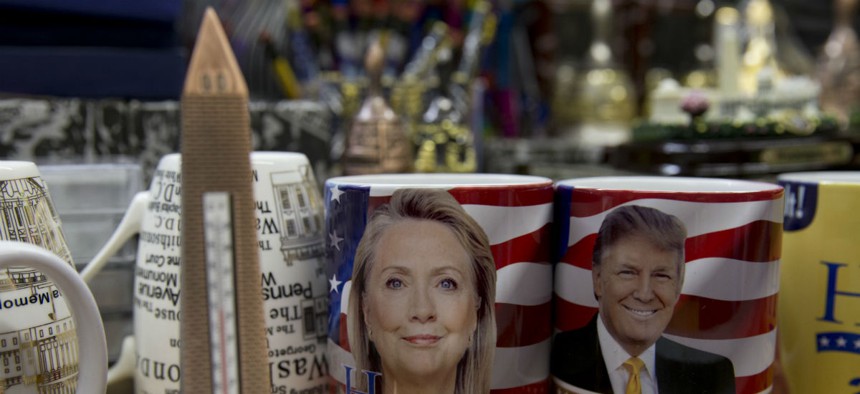
Carolyn Kaster/AP
Many in 'Cynical' Electorate OK With Big Government If Reformed
Volcker Alliance pre-elections surveys show bipartisan skepticism about agencies' performance.
The angry, divided American public has an increasing appetite for government reform, though the closeness of November’s vote between Donald Trump and Hillary Clinton bodes ill for consensus on whether or not government should be pared back, a new study found.
Shifts in attitudes among different voter segments in recent years gave Trump “a unified base of small government/big reform supporters, but Secretary Clinton a base of big government supporters who were deeply divided on the need for government reform,” according to a report published on Thursday by the nonprofit Volcker Alliance. The analysis by Paul C. Light, professor of public service at New York University, is based in part on his August 2016 survey of 1,000 randomly selected Americans.
The sought-after reforms include campaign finance, ethics and curbing waste.
Analyzing past data from eight ongoing opinion surveys, with particular reliance on work by the Pew Research Center, Light divided survey respondents into four groups: dismantlers, priority setters, streamliners and reinventors.
President-elect Trump built a base primarily around dismantlers, who want to shrink government and force major reforms, the analysis said. Clinton’s most loyal followers came from the priority setters, who favor large government and dramatic reforms, as well as from reinventors, who favor big government but only mild reforms. The two candidates appear to have split the streamliners, who seek smaller government and some reforms.
“The four philosophies of reform help explain why Mr. Trump struggled to break a support level of 45 percent en route to his electoral vote victory and why Mrs. Clinton was able to win 47 percent of the popular vote,” Light wrote. “Donald Trump’s only hope for bringing the nation together after the bitter 2016 campaign is to craft an agenda that satisfies the base of angry, frustrated Americans who elected him yet engenders support from former Secretary of State Hillary Clinton’s base of angry, frustrated Americans who rejected him. He cannot succeed in doing so without a compromise between the competing philosophies that gave the electoral vote to him and the popular vote to Mrs. Clinton.”
Over the past few decades as the size of government emerged as a central election-year debate, Americans who favor smaller government and very major reform increased from 17 percent in 1997 to 43 percent in August 2016, the report noted. The percentage who favor bigger government and only some reform dropped from 43 percent in 1997 to 20 percent in 2016. Finally, the percentage who favor bigger government and very major reform increased from 16 percent in 1997 to 25 percent in 2016.
At the agency management level, wrote Light, a longtime student of government reform efforts, Trump should rethink his plan for a federal hiring freeze. “Freezes, caps and ceilings have never prevented a single government breakdown,” Light wrote. “They merely increase the odds that the government will fail again—be it in delivering veterans health care, overseeing deepwater oil drilling or preventing homegrown terrorism.”
Instead, Congress and Trump should create “a bipartisan national commission to conduct the long overdue and often-promised overhaul of how the federal government works,” the report said. ”Armed with a fast-track approval process, such a commission could finally modernize the government’s antiquated systems, rebuild the workforce to deliver on critical missions, and even downsize the government-industrial complex of more than 7 million federal, contract and grant employees.”
Light also said Trump “must simultaneously address the [Office of Personnel Management's] sagging reputation in the wake of data hacks and executive turnover, while supporting a new personnel system designed to produce a next-generation workforce that can fill the vacancies created as the federal government’s baby boomers move into retirement.”







